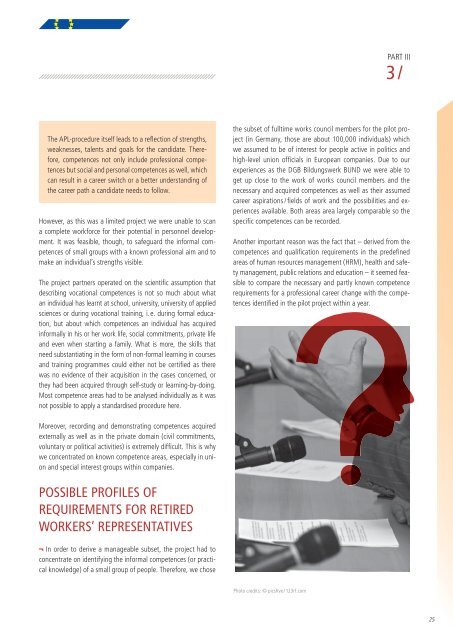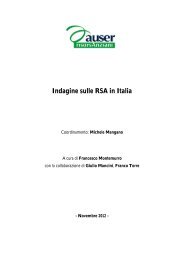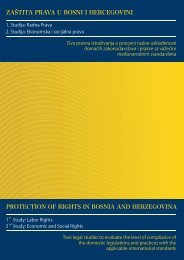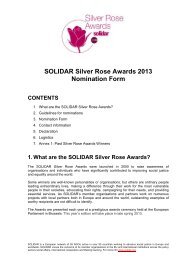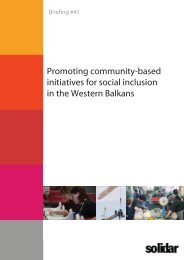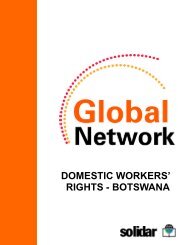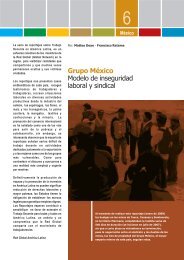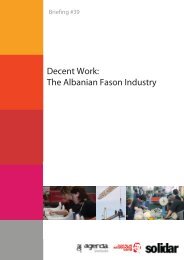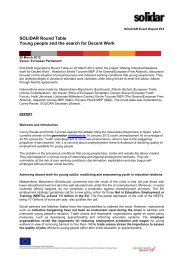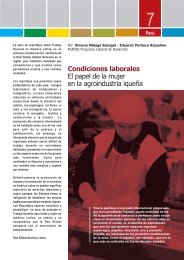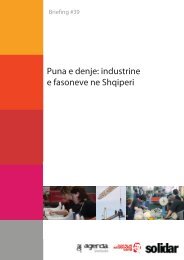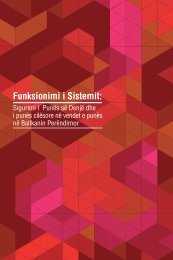RECOGNITION OF NON-FORMAL AND INFORMAL ... - Solidar
RECOGNITION OF NON-FORMAL AND INFORMAL ... - Solidar
RECOGNITION OF NON-FORMAL AND INFORMAL ... - Solidar
Create successful ePaper yourself
Turn your PDF publications into a flip-book with our unique Google optimized e-Paper software.
PART III<br />
3 /<br />
The APL-procedure itself leads to a refl ection of strengths,<br />
weaknesses, talents and goals for the candidate. Therefore,<br />
competences not only include professional competences<br />
but social and personal competences as well, which<br />
can result in a career switch or a better understanding of<br />
the career path a candidate needs to follow.<br />
However, as this was a limited project we were unable to scan<br />
a complete workforce for their potential in personnel development.<br />
It was feasible, though, to safeguard the informal competences<br />
of small groups with a known professional aim and to<br />
make an individual’s strengths visible.<br />
The project partners operated on the scientifi c assumption that<br />
describing vocational competences is not so much about what<br />
an individual has learnt at school, university, university of applied<br />
sciences or during vocational training, i. e. during formal education,<br />
but about which competences an individual has acquired<br />
informally in his or her work life, social commitments, private life<br />
and even when starting a family. What is more, the skills that<br />
need substantiating in the form of non-formal learning in courses<br />
and training programmes could either not be certifi ed as there<br />
was no evidence of their acquisition in the cases concerned, or<br />
they had been acquired through self-study or learning-by-doing.<br />
Most competence areas had to be analysed individually as it was<br />
not possible to apply a standardised procedure here.<br />
the subset of fulltime works council members for the pilot project<br />
(in Germany, those are about 100,000 individuals) which<br />
we assumed to be of interest for people active in politics and<br />
high-level union offi cials in European companies. Due to our<br />
experiences as the DGB Bildungswerk BUND we were able to<br />
get up close to the work of works council members and the<br />
necessary and acquired competences as well as their assumed<br />
career aspirations / fi elds of work and the possibilities and experiences<br />
available. Both areas area largely comparable so the<br />
specifi c competences can be recorded.<br />
Another important reason was the fact that – derived from the<br />
competences and qualifi cation requirements in the predefi ned<br />
areas of human resources management (HRM), health and safety<br />
management, public relations and education – it seemed feasible<br />
to compare the necessary and partly known competence<br />
requirements for a professional career change with the competences<br />
identifi ed in the pilot project within a year.<br />
Moreover, recording and demonstrating competences acquired<br />
externally as well as in the private domain (civil commitments,<br />
voluntary or political activities) is extremely diffi cult. This is why<br />
we concentrated on known competence areas, especially in union<br />
and special interest groups within companies.<br />
POSSIBLE PR<strong>OF</strong>ILES <strong>OF</strong><br />
REQUIREMENTS FOR RETIRED<br />
WORKERS’ REPRESENTATIVES<br />
¬ In order to derive a manageable subset, the project had to<br />
concentrate on identifying the informal competences (or practical<br />
knowledge) of a small group of people. Therefore, we chose<br />
Photo credits: © picsfi ve / 123rf.com<br />
25


